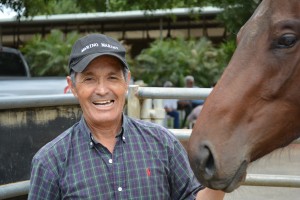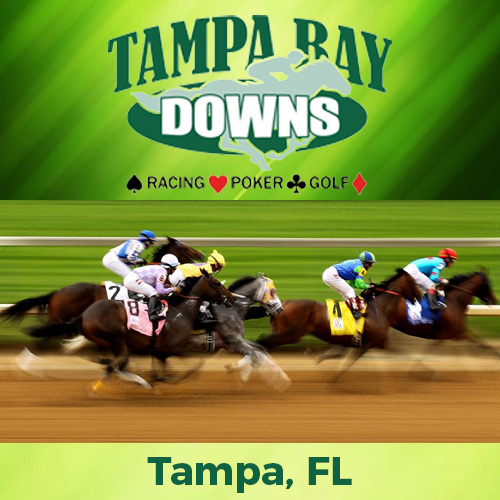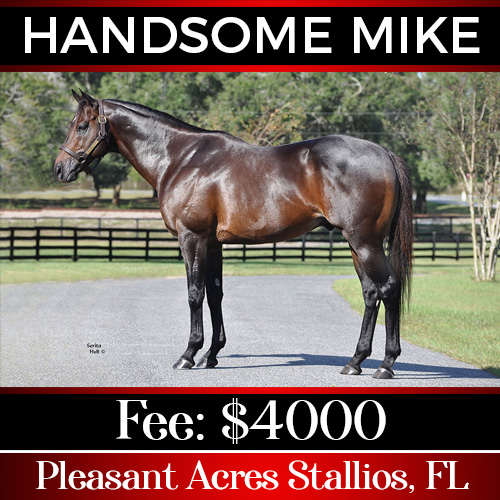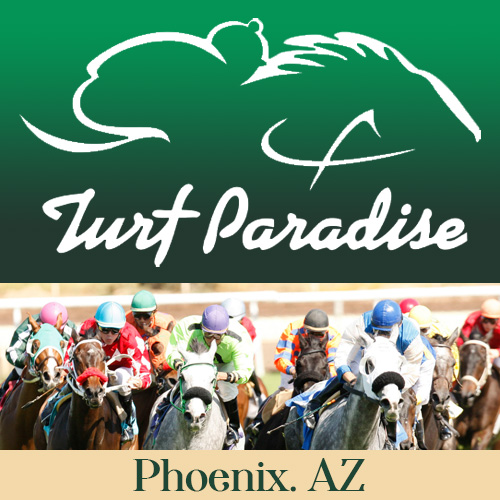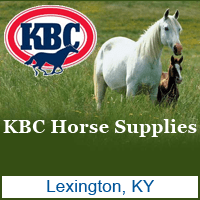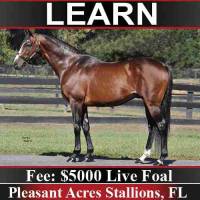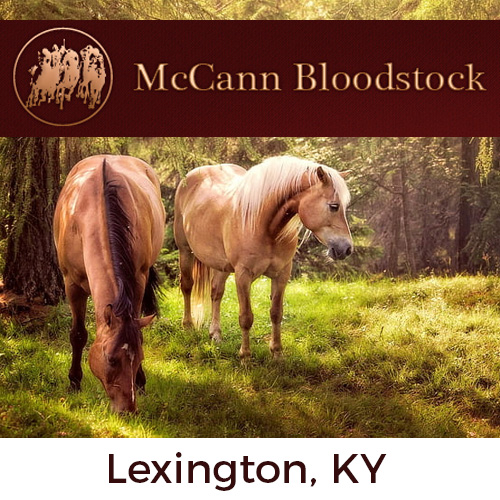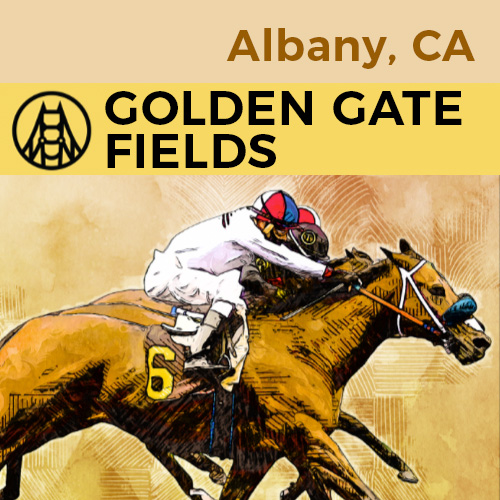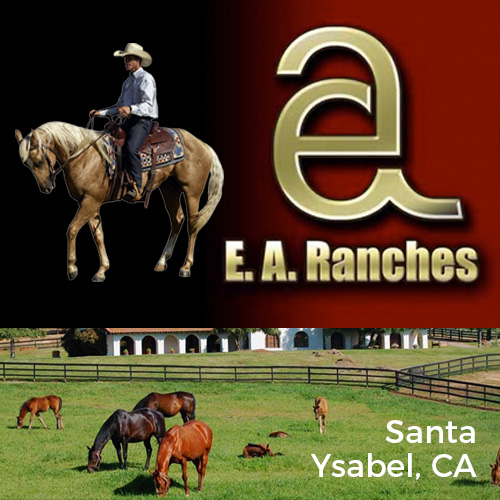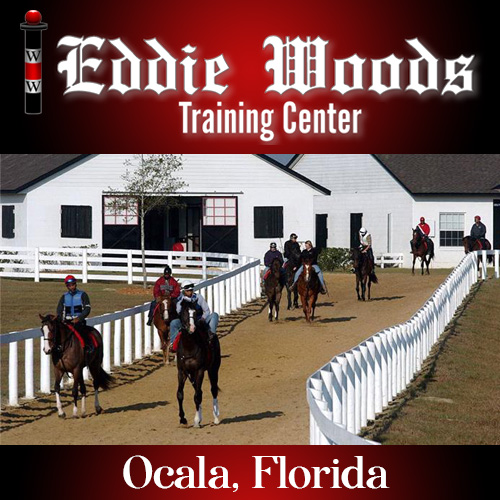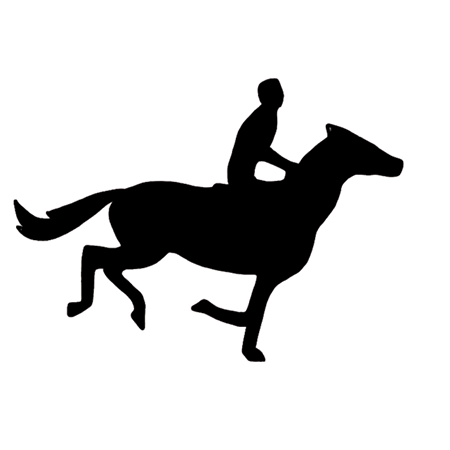The Interviews: Thoroughbred Farm Owner and Ex-Jockey Bobby Gonzalez
From riding match races as a teenager in the outreaches of Mexico to becoming one of the winning most riders in California with over 4400 winners and $64 million dollars in prize money, Bobby Gonzalez now owns and runs a layup facility in Brentwood, California. Bobby talked to us about his career.
TBP: Bobby tell us about how you got involved with horses growing up.
BG: I was raised in Michoacan, Mexico, my parents and grandparents had horses around the place where we lived and I always loved to ride. We came up to Tijuana in around 1968 as my father Sam Gonzalez started working as an exercise rider at Agua Caliente. I used to go and watch him gallop horses at the racetrack there and that was my first experience of a real racetrack, although I had already ridden many match races in other parts of Mexico by then.
TBP: Tell us about the match racing, was it legal or recognized as rules horse racing?
BG: It was legal, but no it was not recognized officially. There would be ten to fifteen match races in an afternoon, just two horses going against each other over 200 or sometimes 300 or 350 yards, it was all about speed like quarter horse racing. Horse owners would challenge each other based on what they knew about each other's horses, there were thoroughbreds, quarter horses and half breds and some horses would sometimes run more than once the same day. There was no tote system or bookmakers but there was big money being bet by people with each other. People also would bet on the stages in a race too, you could bet on which horse broke the fastest and was in front first jump out of the gate and there were cameras to record which horse was in front after 100 yards, 200 yards and 300 yards, so it was like having four races in one.
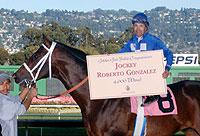 TBP: So that experience may be part of the reason why you became such a great gate rider here in the states. After the match racing what was the next step for you?
TBP: So that experience may be part of the reason why you became such a great gate rider here in the states. After the match racing what was the next step for you?
BG: I told my father that I wanted to be a jockey and I got a job at a thoroughbred ranch in San Clemente. They knew I had ridden in matches in Mexico so they asked me to ride match races here in California in Riverside county, which I did every weekend for a while. I worked at the ranch for three or four years and in '71 I got a break when the trainer Jerry Dutton came to see some of his two year olds work. Jerry asked me to to go and work for him at Hollywood Park but I was scared to go to the racetrack at first and didn't really want to go as I knew nobody there and spoke no English. Jerry kept telling me he wanted me to gallop his horses so eventually I went to work for him. I didn't know what I was doing at first and I didn't understand Jerry's instructions either, I had to learn the Hollywood Park track by having one of the grooms draw me a map and then running round the track myself to see where the poles were. I worked for Jerry for two years and got my jockey's licence in 1975 as a lot of people had been encouraging me to go for it. Tony Diaz who rode then and now trains was a big help to me.
I had half a dozen rides and then rode my first winner on May 1st 1975 on a horse called Sawtoot. I was five lengths in front with a sixteenth to go and I was so excited I stood up four or five jumps before the wire. It was an allowance race worth $16,000 so it was a big score for me as working for Jerry I was making just $375 a month and I was on 10% of the winners share of the purse, so it was a big payday.
TBP: After that first winner how long did you have to wait for the next?
BG: Not too long, I rode three longshot winners at Hollywood Park just before Del Mar opened. Then on opening day at Del Mar I rode the winners of each leg of the daily double. After that I started getting a lot of attention and I think I was third leading rider of the meet.
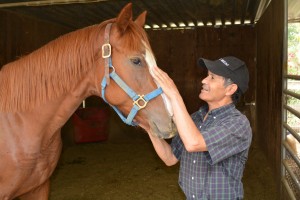 TBP: Who were the top riders who you were riding against back then?
TBP: Who were the top riders who you were riding against back then?
BG: So many top riders, Laffit Pincay, Bill Shoemaker, Angel Cordero, Sandy Hawley, Darryl McHargue, Chris McCarron, Eddie Delahoussaye, Fernando Toro, Tony Diaz, Milo Valenzuela - there were some great riders. I got lucky because they took a liking to me, Milo Valenzuela in particular was really good to me. He told that if I continued to do well not to get a big head or start to be a smart ass. He said if that happens the established riders are going to start disliking you and they will mess you up in races and they will also make a point of going after your best rides and taking your good horses away from you. So if I made a mistake in a race I always apologized and I made a big effort to know what was going on around me in a race and respect the other riders, and it worked for me.
Then I got a lot of good publicity when I was selected to ride in the International Jockey's Challenge for the US team against top riders from all over the world, Lester Piggott, Yves St Martin, Steve Cauthen etc.. I allegedly got beat a nose by Bill Shoemaker in one of the challenge races, but they took 15 minutes to make the result official and to this day I am still convinced I won that race.
TBP: What were Cordero and Pincay like to be around?
BG: Angel was very professional, he was all business at the racetrack, he had a real strong work ethic working a lot of horses every morning. He was very nice and friendly off the track, we would go to dinner and socialize together. Laffit was similar in his professionalism to Angel, but he was much quieter, he would say hello when he arrived in the jock's room but then you wouldn't know he was there after that. Angel was much louder and more extrovert. When Angel Cordero got to the jock's room everyone knew it and when Angel Cordero left the jock's room everyone knew it too. He was a big joker until he got on a horse on the racetrack, then he was all business.
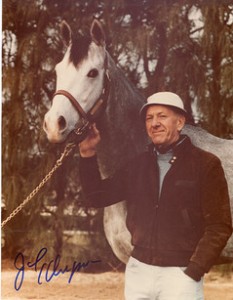 TBP: Did you get the chance to ride any really nice horses as a bug boy?
TBP: Did you get the chance to ride any really nice horses as a bug boy?
BG: Almost... I started working a two year old for Riley Cofer in the mornings. By the time I had worked him a couple of times I knew he was a monster, but I had never really let the horse run as I thought that if I did then one of the top riders would find out about him and take him away from me. I said to Riley one morning "Mr Cofer you have a really nice horse here, but I'm afraid to let him really run because if I do I may never get to ride him again." Riley said to me "No Bobby, if you like the horse, he is yours. You can keep working him and have the ride when he runs too." Well the horse was Jaklin Klugman. He was one work away from his first race when his owner the actor Jack Klugman came down to watch him train one morning. Jack was friends with Chris McCarron and he asked Riley if Chris could work the horse to see what he thought of him. Riley tried to duck it and stay loyal to me and told Jack that I had been working the horse and I should work him but Jack insisted that Chris work him, so he did. Well Jaklin Klugman worked five eighths in 57.3 out of the gate at Del Mar with four older horses and was six lengths clear at the end of the work, he galloped out in 1.11 flat. So I lost my chance to ride him in a race and Chris McCarron rode him. It took me a while to get over that.
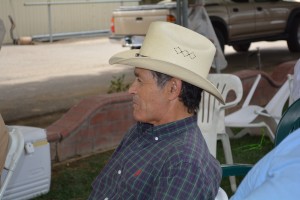 TBP: How did you end up moving north to Bay Meadows and Golden Gate?
TBP: How did you end up moving north to Bay Meadows and Golden Gate?
BG: My agent didn't want me to ride the Pomona meet in between the Santa Anita and Oak Tree meets, the Pomona track was a very tight, narrow, half mile and pretty dangerous back then. I came up to ride at Bay Meadows instead for a month and did well. I liked it up here and saw a lot of opportunity so I moved up with my family.
TBP: You always had a great reputation as a top class, professional rider but you were also known as an excellent speed rider. Was that reasonable or do you feel you were as good on closers and other horses as you were on front running speed horses?
BG: Well I felt that I was a good all round rider, not just a speed rider, I won plenty of races from off the pace. But when everyone started looking to put me up if they had a speed horse that they needed to be on the lead, it was fine with me. If you're a speed rider nobody can complain because you lost too much ground. My speed horses were always right on the rail and I won a lot of races because I saved all the ground and controlled the race. If you control the race and you have a good clock in your head you can win a lot of races. You will often see riders like Pat Valenzuela and Martin Garcia do the same thing.
TBP: Some speed horses seem able to eyeball another horse, duel with them and get home and others don't. What is the difference?
BG: Well some speed horses like to fight head to head and some don't. Some horses if they get headed they just quit because they have no heart. With those kind of horses you need to keep them in front by at least a length or a length and a half even if that means you start riding them hard at the half mile or five eighths pole, because if another horse heads them or even comes alongside, you're done.
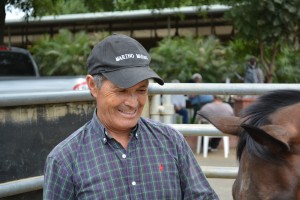 TBP: Tell us about some of your favorite horses that you have ridden over the years.
TBP: Tell us about some of your favorite horses that you have ridden over the years.
BG: Oh boy, I rode a lot of nice horses and I have a lot of favorites. But too mention just a few, I will never forget my first winner Sawtoot at Hollywood Park of course which was one of my favorite racetracks. I rode a New Zealand bred horse for Wayne Lukas called Leonores who once beat John Henry, I think the race was the San Francisco Handicap. He had to be held up and come with one run. John Henry was five or six lengths in front of us coming into the stretch and we just exploded by him. Leonores was a great horse with a lot of heart.
I rode a good horse called Avenging Force for Doug Utley in a stakes race against Jerry Hollendorfer's King Glorious with Chris McCarron riding. We were thinking we were running for second and decided not to cut our own throats by trying to go after King Glorious. Turning for home Avenging Force was going well, we were sat in King Glorious's slipstream and Chris McCarron couldn't see us when he looked over his shoulder and was taking it a little easy. Then Avenging Force just blew by him and we won the race by a length and a half.
Don Alberto was another great favorite, he won stakes races on the grass and the dirt, sprints, routes, no matter what race you put him in he always showed up. He held the track record at Golden Gate for a flat mile. Another really nice horse was a mare trained by Bill Delia called Bai and Bai. She was a very versatile mare that I won a lot of races on and she was tough to beat if you rode her right. You had to sit very still on her until the 5/16ths pole and then ask her to run and she would almost always deliver.
The toughest sprinter I ever rode was a mare called Emma Bovary trained by Larry Ross. She was a closer, she usually sat dead last in her races and had a great turn of foot. I rode her 15 times and won 12 races on her. But for pure early speed I would say the fastest horse I ever rode was a filly called Leticia for Doug Utley. She would go in 21 and change no problem and if you asked her she could go in 20 and change. She was a fast, fast horse who could carry her speed and won a lot of races.
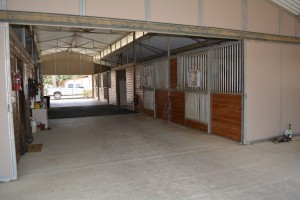 TBP: After riding on dirt tracks for many years how did you adapt to riding on Golden Gate's Tapeta surface?
TBP: After riding on dirt tracks for many years how did you adapt to riding on Golden Gate's Tapeta surface?
BG: I really liked riding on Tapeta. I rode just as many winners on it, on just as many wire to wire speed horses as well. You don't get as tired riding on it as you do on dirt as you don't ride horses as hard early on and you don't normally have to start riding a horse hard on it until around a quarter of a mile out. There is no kickback, you don't get mud and dirt in your face, it's a more comfortable situation. Trainers weren't sure how to train on it at first but they have adapted. I know most places with synthetics are going back to dirt now, but I don't think other synthetic tracks around the country have been given enough of a chance.
If they go back to dirt at Golden Gate with the extended meet they have now Bay Meadows is closed, they are going to have a lot of problems losing racing days when it rains hard. I don't think a dirt track will handle the year round racing and training, it's only the Tapeta that can handle it. Tapeta is better for the horses anyway, a lot of horses never get used to getting dirt in their face and won't give their best when they do.
TBP: You unfortunately had a bad fall in April 2009 which ended your riding career. Had retirement crossed your mind at all before it happened?
BG: No not at all, I was doing so good, I think the week that I got hurt I had ridden seven winners. My agent Bob Hack knew that I didn't want to ride that many horses and we were going for quality over quantity, I was riding three or four live horses a day and riding two or three workers in the morning. The fall happened when the horse broke it's hind leg. I don't remember going down, I just remember waking up in the hospital. I had broken my neck. I couldn't feel or move my fingers or my legs, I was in pain everywhere and they thought that I might be paralysed. Thankfully after four days I got some feeling and movement back in my toes. Then I slowly started to improve. I was immobolized and in a halo for four months, but I was very lucky that it wasn't worse. I still have therapy and am on medication to this day.
TBP: Do you go to the track when racing is on these days?
BG: I try not too because I miss it too much. The racetrack was my life. I watch it on TV sometimes.
TBP: How do you compare California racing compared to when you started riding here?
BG: Well we used to have much bigger fields and bigger crowds and while it was harder to win races as a result it was fun, there seemed to be more people who cared for the sport and the horses. The management of the racetrack don't seem to do enough to advertise the track and the race meets and promote the sport. You used to see a lot more advertising on TV and on billboards on the freeways for example. The tracks used to be a lot busier most of the time.
TBP: Tell us about Rancho San Nicolas, your farm and thoroughbred layup facility for horses off the track.
BG: We are in Brentwood, CA, in the East Bay, I bought the place in 1975. Back then there was just a hay barn and one main barn on the property with around eight stalls for horses, so I added another bigger barn, a lot more pens, paddocks and turnouts and we did a lot of additional roofing, I did a lot of construction here. We can accommodate up to 60 horses. I have good help and I like to think we do a great job for people with their horses. I didn't want to train really as it is such a 24/7 deal, this business suits me better. I enjoy it and it's a nice lifestyle for me. We have room for a few more horses at the moment anyone with a horse who i looking for some rest and rehabilitation can contact me.
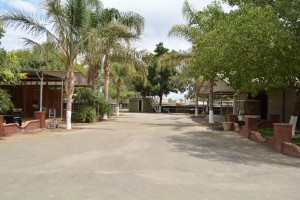 TP: Thanks Bobby, it's been a pleasure.
TP: Thanks Bobby, it's been a pleasure.
BG: You're welcome!
------------------------------------------------------------------------------------
ThoroughbredPeople.com
